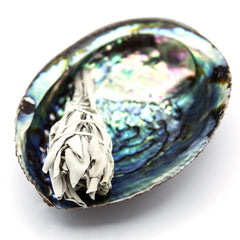
The Significance of Abalone Shell
Abalone shell holds significant cultural meaning in various indigenous cultures, particularly among Native American and Māori people, among others. Here are some aspects of its cultural significance:1. **Spiritual Symbolism**: Abalone is often considered a symbol of ocean energy and is believed to promote balance, harmony, and peace. In many cultures, the shell is used in rituals and ceremonies, symbolizing the connection between land and sea.
2. **Ceremonial Use**: Abalone shells are commonly used in traditional ceremonies. They can serve as ceremonial bowls for holding sacred items or substances, often associated with purification and spiritual practices.
3. **Artistic Representation**: The iridescent surface of abalone shell has made it popular in art and jewelry. It is often used to create ornaments, inlay work, and traditional crafts, serving as a means of artistic expression and cultural identity.
4. **Connection to Ancestors**: For some cultures, abalone shells are seen as a link to ancestors, embodying wisdom and the continuity of traditions. They are often passed down through generations, representing a connection to heritage.
5. **Medicinal Beliefs**: In some cultures, abalone is believed to have healing properties. The shell may be used in alternative medicine practices, as it is thought to promote emotional healing and physical health.
6. **Ecological Importance**: Beyond cultural significance, abalone plays a role in marine ecosystems, and its conservation is vital for maintaining the health of ocean environments, which is also a concern for many indigenous peoples who rely on these ecosystems for their livelihood and cultural practices.
Overall, the abalone shell is rich in symbolism and significance, reflecting deep connections to nature, spirituality, and heritage in various cultures.
← Older Post Newer Post →



